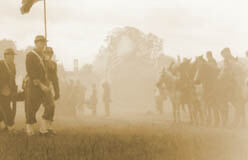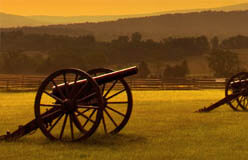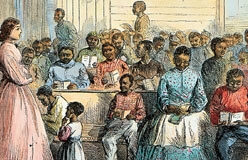On July 21, 1861, a cheery crowd from Washington, D.C., packed picnic baskets and harnessed horses to their carriages. Then they rode 30 miles south to Manassas Junction, Virginia, to watch the war begin. They also thought they’d see it end—with an easy Union victory.
That was not the case. The first battle of the Civil War was named Bull Run in the North after the stream that ran nearby. The Confederate forces soundly defeated the Union army.
The myth of the “90-day war” vanished. What kept either side from a quick victory? The North had more than two times the population of the South from which to draw soldiers. It had twice as many miles of railroad to move troops and supplies. Its factories also produced five times more goods. However, the South had one huge advantage, at least in the early war years. Its officers and soldiers were more experienced than Northern troops. Its men were more used to handling guns and horses and to living in the outdoors. Also, the South only had to defend its territory to win the war. The North had to invade and conquer the South.







